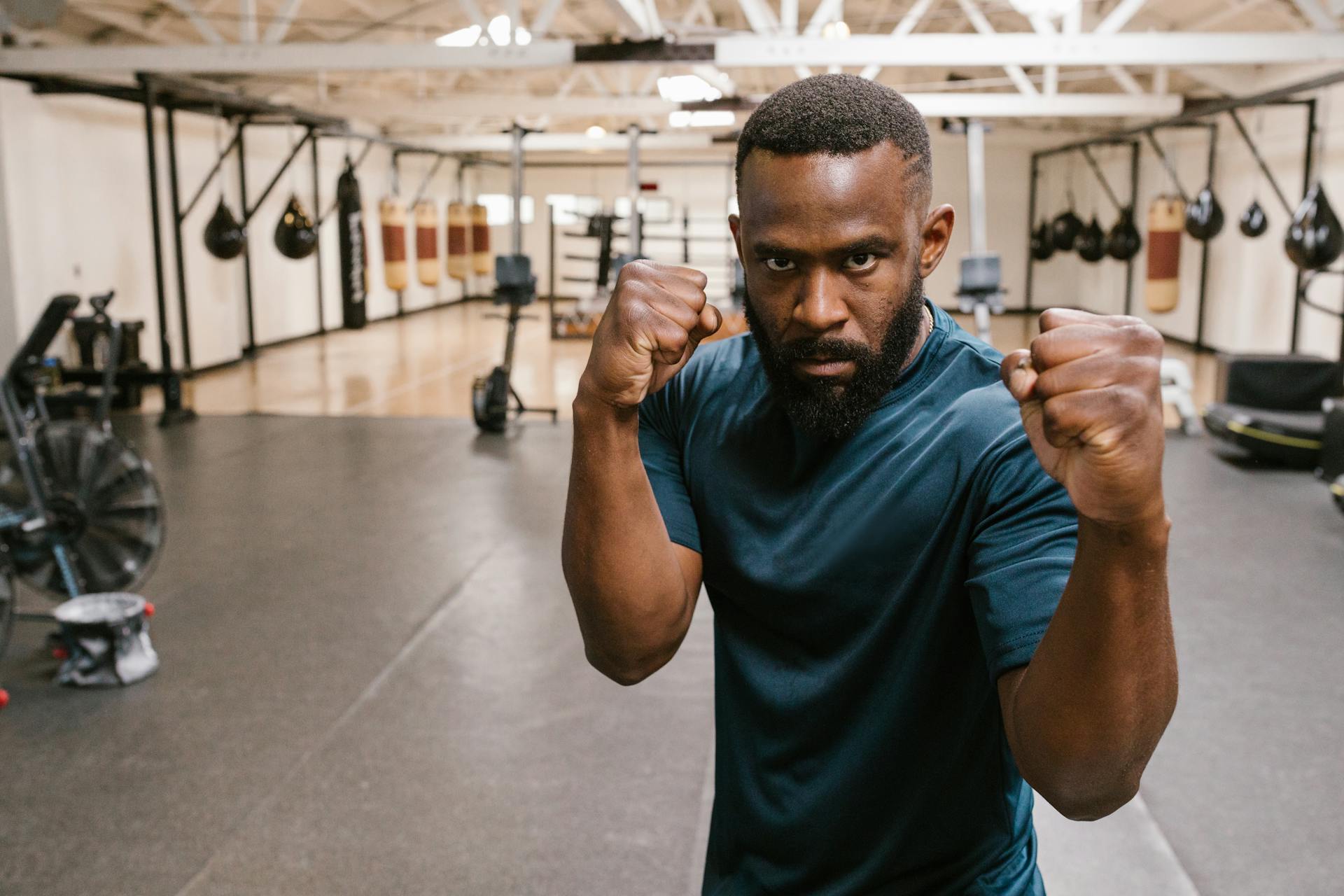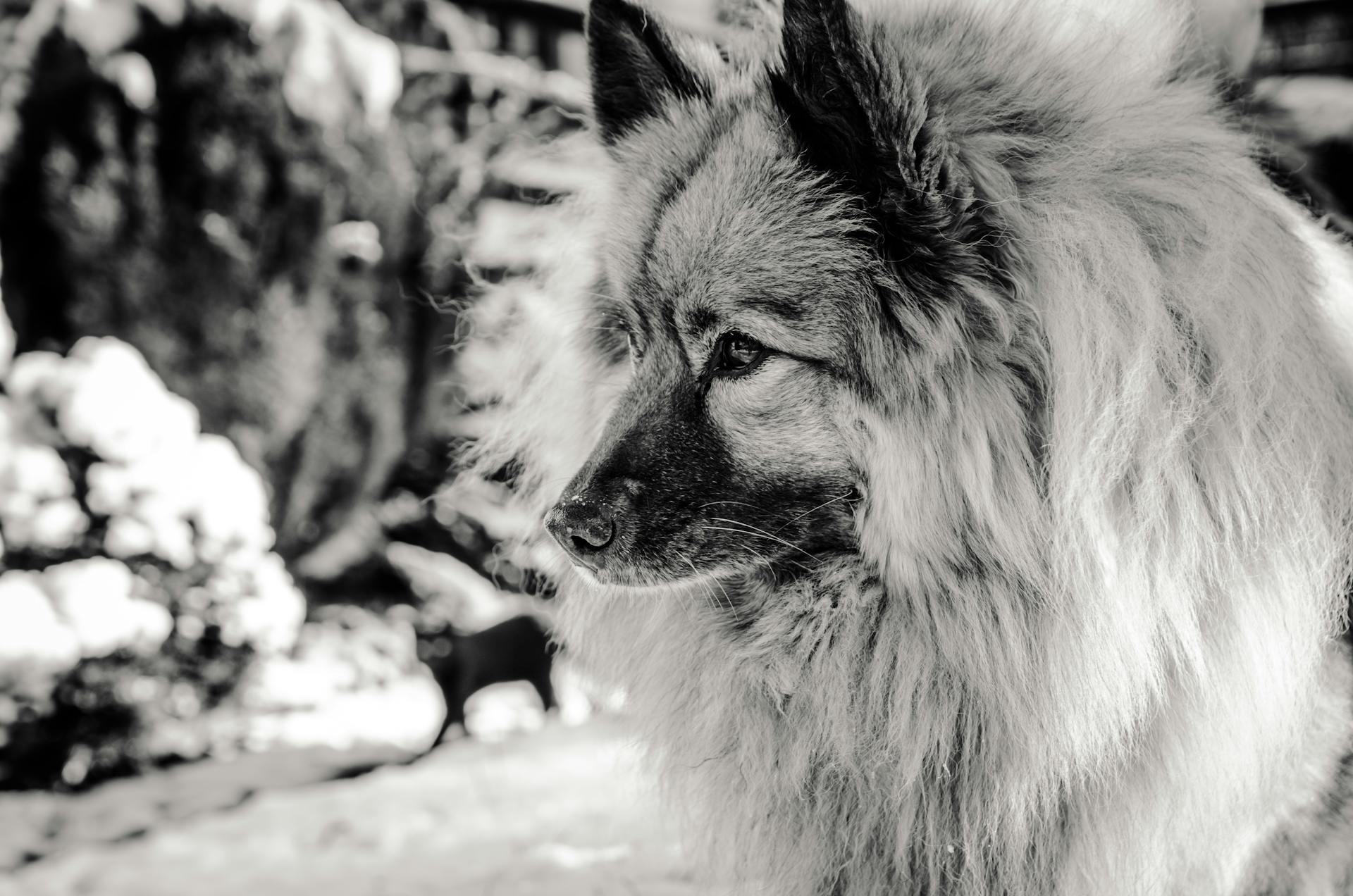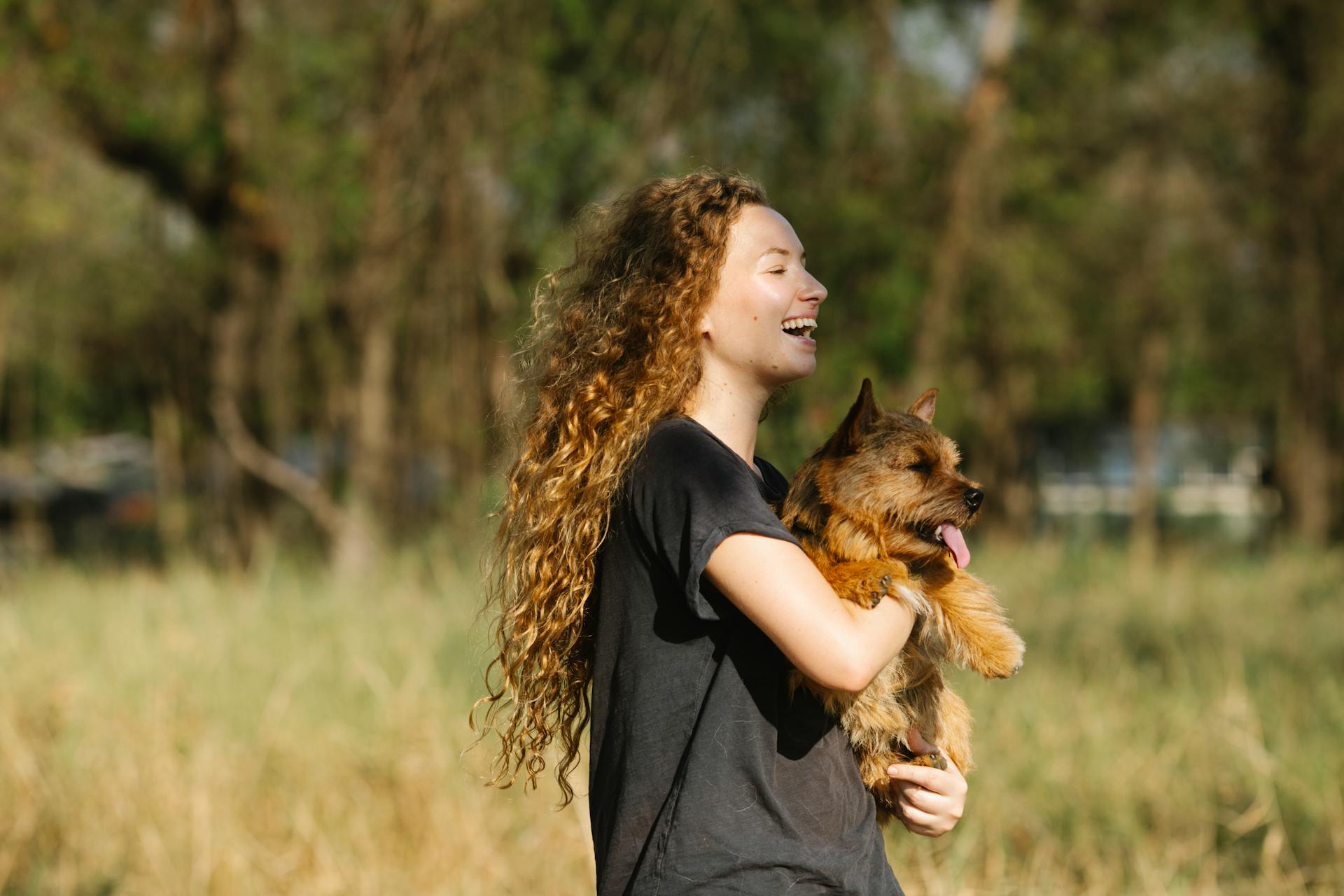
Training an adult dog requires patience and consistency.
Adult dogs can learn new tricks and behaviors, but it's essential to use positive reinforcement techniques to avoid confusing or frightening them.
A well-established routine is key to successful adult dog training, with regular feeding times, exercise, and playtime helping to create a sense of stability and predictability.
Some adult dogs may have existing habits or behaviors that need to be addressed, such as housebreaking or addressing separation anxiety.
Getting Started
Expect an adjustment period when welcoming an older dog into your home, especially if they've been in a shelter for a while. They may need time to become accustomed to their new surroundings.
Tidy up your house before bringing your dog home to prevent nervous behavior. Remove any clutter and put precious objects out of their reach.
Grab some essential supplies, such as a collar or harness, leash, clicker, and other equipment for behavior training. You can find these at a pet store.
Stock up on quality treats for training. Rewarding good behavior is critical to success with dog training.
To ensure consistency in training techniques, talk to your family and make sure everyone is on the same page.
Here are some key supplies to get for your adult dog training:
- Collar or harness
- Leash
- Clicker
- Other equipment for behavior training
- Quality treats for training
Training Approaches
Training adult dogs requires a different approach than training puppies. It's never too late for dogs to learn, so consistency and patience are key.
Older dogs have already learned certain behaviors based on their past experiences, which can be challenging to change. However, with repetition, positive enforcement, and patience, they can learn new behaviors.
A professional trainer can help you identify and address underlying issues, such as medical problems or learned negative behaviors, that may be contributing to your dog's behavioral issues.
Some key tips for training adult dogs include managing their energy, controlling their impulses, and teaching basic skills like sitting, staying, and walking on a leash. Rewarding good behavior with treats and praise can also encourage positive behavior.
Worth a look: Cockapoo Behavior Issues
Here are some essential training tips to get you started:
- Manage your dog's energy with exercise and mental stimulation.
- Teach your dog to control their impulses with commands like "stay" and "wait".
- Focus on basic skills like sitting, staying, and walking on a leash.
- Reward good behavior with treats and praise.
- Negatively reward bad behavior by ignoring it, rather than punishing your dog.
- Build your dog's confidence by socializing them with other people and dogs.
By following these tips and working with a professional trainer, you can help your adult dog become a well-behaved and well-adjusted member of your family.
Training Environment
Dogs of all ages require a solid training foundation to maintain a healthy and happy relationship with their owners.
A quiet place to train your dog is essential, especially older dogs who may develop joint pain and associate loud sounds with pain. This can reduce the risk of them developing negative associations with your training attempts.
You should find a safe space in your home far away from loud sounds to create a distraction-free environment for your dog to focus on their training.
Quiet Training Space
Older dogs may develop joint pain and other conditions that make sudden movements painful, causing them to associate loud sounds with pain.
A quiet training space can help reduce the risk of your dog developing negative associations with your training attempts.
Find a safe space in your home far away from loud sounds to minimize distractions and promote focus.
Older dogs are less likely to focus on their training if they're on edge due to loud noise.
See what others are reading: Dog Training Focus Exercises
Class Logistics
Before attending class, your dog will need to be up to date on its DHPP/DLPP and Rabies vaccinations, and you may also want to consider a Bordetella vaccination.
You'll want to bring lots of tasty treats for your dog, a non-retractable leash, and comfortable clothes that can stand up to a bit of dog hair and drool to class.
In our series classes, you'll have a set curriculum of behaviors and goals for the dogs, with each week building on skills from the previous classes, so make sure your schedule allows you to attend most of the scheduled classes.
For our ongoing classes, you have flexibility in the timing and behaviors you train, and you can even swap classes if you can't make a session.
Each class is different, but you'll receive a confirmation email with detailed information on logistics and a link to download the Ahimsa Dog Training Manual when you sign up.
For your interest: Master Class Dog Training
Training an Older Dog
Training an older dog requires patience and understanding of their unique needs. Older dogs can develop joint pain and other conditions that make sudden movements painful, which can affect their response to loud sounds.
You should find a safe space in your home far away from loud sounds to reduce the risk of them developing negative associations with your training attempts. This quiet space will help them focus on their training.
Older dogs have already learned certain behaviors based on how they were raised in the past. They're also less energetic, so they're more motivated by things like their appetite.
Consistency and patience are key when training an older dog. It really depends on how consistent your training is and how patient you are to train them.
Here are some tips to keep in mind when training an older dog:
- Use repetition, positive enforcement, and patience – a lot of it.
- Focus on one task at a time to avoid overwhelming them.
- Use their appetite as a motivator, such as with treats.
If you find it challenging to train your dog, consider contacting a professional to discuss solutions for their behavior. They can help you develop a personalized training plan tailored to your dog's needs.
Training Schedule
As you start your adult dog training journey, it's essential to create a solid training schedule.
Set aside 15-30 minutes of dedicated time each day for training sessions, ideally at the same time to establish a routine.
Consistency is key, so try to stick to your schedule even on weekends or days off.
Adult dogs can learn new tricks and behaviors at any age, but it's best to start with short sessions and gradually increase duration as they become more focused.
Begin with 3-5 minute training sessions and gradually increase to 10-15 minutes over time.
Remember, adult dogs have different learning styles, so be patient and adapt your training approach to suit your dog's needs.
Curious to learn more? Check out: It's Your Choice Dog Training
Professional Help
Seeking professional help can make a huge difference in your adult dog's training journey. A professional trainer with experience can help you understand the principles of dog training and develop a customized plan for your dog.
Consistency and patience are key to successful training, regardless of your dog's age. If you're struggling to train your dog, consider enrolling them in a training program with a professional trainer.
Broaden your view: Do Dog Diapers Help with Potty Training
Private training sessions can be especially helpful for adult dogs that struggle to focus in group classes. In-home training services offer a private training solution tailored to your dog's individual needs.
A professional trainer can help you identify underlying issues that may be contributing to your dog's behavior problems. They can also provide you with the tools and techniques you need to reinforce good behavior and address bad behavior.
Here are 10 tips from professional trainers for training troubled adult dogs:
Train with Confidence
It's never too late for dogs to learn, and consistency is key. Consistent training will help your older dog adapt to new behaviors.
Older dogs have a history of learned behaviors that can affect their training, so patience is essential. They're also less energetic, which means they're more motivated by their appetite.
Repetition and positive reinforcement are crucial for successful training. This tells your dog what you want them to do, and they'll eventually understand.
Here's an interesting read: Kennel Training Older Dog
Here are some tips to keep in mind as you train your older dog:
Remember, every dog is different, so it's essential to tailor your training approach to your dog's unique needs and personality.
Frequently Asked Questions
How do you discipline an adult dog?
Disciplining an adult dog involves using positive reinforcement techniques, such as redirecting unwanted behavior and withholding attention, rather than punishment or physical correction
Sources
- https://districtdogs.com/dog-training/
- https://www.unleashfido.com/dog-training-strategies-how-to-train-an-older-dog/
- https://pettable.com/dog-training
- https://servicedogacademy.com/wp/free-dog-training-advice/adult-dog-training-10-professional-trainer-tips/
- https://ahimsadogtraining.com/adult-dog-classes/
Featured Images: pexels.com


